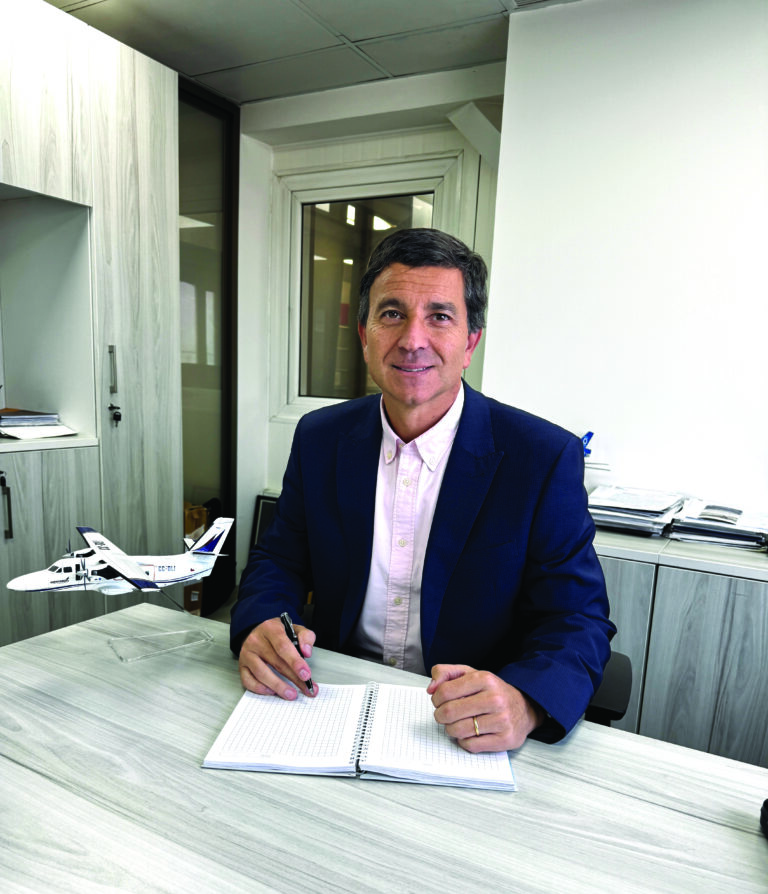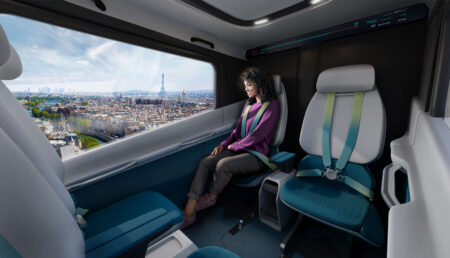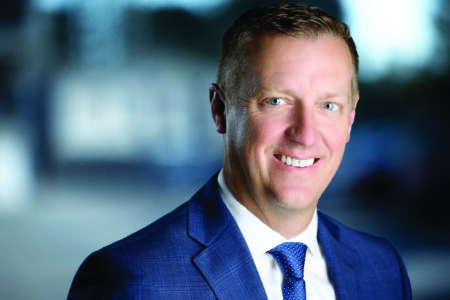CEO Ricardo Real shares how Chile-based operator Aerocardal has evolved to offer medevac, executive, cargo and aircraft distribution, and why adaptability is key to its future
What was your journey into aviation?
Like many in this industry, I didn’t set out to be in the aviation sector, it sort of fell into place. With a business administration degree from Santiago, MBA Federico Santa María University and time in the USA, I came to Ladeco when LAN, now LATAM (Latin America), was in the process of acquiring it. I began at Santiago Airport running the counters at the age of 24. By 26 oversaw all the airports nationwide. I later relocated to Europe and spent several years in Madrid, Paris, and Frankfurt.
I was contacted in 2010 by a headhunting firm on behalf of Aerocardal, which at that time had around 75 staff and Chile’s first private FBO. I accepted the position, and we have since expanded to become a multi-service operator with medical, executive, cargo, manufacturer representative (Gulfstream) and MRO services throughout Chile and further afield.
How does Aerocardal balance business aviation and medical flights?
It is a sophisticated operation, but one that we can do through how we organize our fleet and staff. For example, we always keep one of our aircraft medevac-capable – a Gulfstream G150 or Dornier – and others configured as executives. With the Pilatus PC-12, it takes us just 45 minutes to change configuration, mission-dependent. The secret is flexibility and the operating discipline to handle fixed contracts, public healthcare transfers, and private charters all at the same time. It’s challenging, but it’s what differentiates us in Chile and in the region. We are able to operate with two stretchers on board to make the flight more efficient for our customer: patients and clinics.

Since joining Aerocardal as CEO, what are you proudest about?
One of the highlights has been our expansion from a humble FBO-based business to a diversified aviation services company. We’ve expanded our medical flight business considerably and now perform approximately 50% of the market’s medevac flights in Chile. We also diversified into cargo, mining operations and the transportation of hazardous materials.
We only handled executive aircraft back in 2011. Now we are fully open to wide body aircraft.
Another milestone was increasing our fleet to more jets and turboprops for executive, medevac, cargo and charter purposes. Finally, I’m proud of the purchase and introduction of the LET 410NG in South America – an aircraft that opens up new regional opportunities and which we now distribute to the region alongside our Czech partners OMNIPOL Group and Aircraft Industries.

How does operating in a geographically challenging region affect Aerocardal’s services?
Chile is a thin, long country with challenging geography and remote settlements. We have more than 80 runways under 700m (2,300ft) that we fly to regularly, so we require aircraft capable of operating from unprepared strips and with short take-off capability. That is why we have been drawn to aircraft such as the Pilatus PC-12 and LET 410NG. They are essential for mining support activities, flights such as to Robinson Crusoe Island, and for emergency flights.
Geography dictates everything – fleet selection, scheduling, even fuel strategy.

How does Aerocardal stand out?
We’ve focused on being a full-service operator, as opposed to a charter company. Our FBO services, aircraft management, MRO services, and medevac operations give us a wider presence and deeper customer relationships.
We’re also the only private operator in Chile with a fuel farm and a national FBO network, through our partnership with World Fuel Services. And we’ve made sure to invest in fleet and operational flexibility, so we don’t get limited by market seasonality.
Finally, we are expanding our frontiers with our latest partner OMNIPOL Group. The partnerhip is giving us the opportunity to represent them in LATAM with the whole portfolio they manage.
We’re also growing outside Chile. We’re looking very seriously at Peru, Brazil and Argentina as possible next steps – we’ve analyzed it in-depth the past two years. In executive aviation, we have customers requesting that we place new airplanes under our AOC, so that should also grow. With the LET 410NG now in our fleet, we’re well-positioned to open up niche markets that aren’t accessible to others.
What Latin American business aviation trends do you believe professionals who are entering the industry should be aware of today?
To start with, flexibility is everything, whether fleet, staffing, or scheduling. The aviation infrastructure in Latin America is not necessarily always predictable, and the regulatory framework is occasionally fragmented.
Second, understanding the mix of public and private demand is crucial. We operate with more than 45 insurance firms, for example, but also provide assistance to public hospitals. Understanding how to operate in that mixed environment is critical here.

In what ways is Aerocardal responding to growing demand for aviation sustainability?
It’s a step-by-step process, but one we’re committed to. In the short term, we’re focused on operational efficiency – optimizing routes, reducing repositioning flights, and using the most appropriate aircraft for the mission.
The LET 410NG, for example, offers more payload with less consumption on shorter flights, making it particularly apt for regional sustainability.
When SAF becomes more widely available in Latin America, we’ll be well-positioned to add it but right now no SAF is available in Chile.
What are South American business aviation companies’ most significant challenges?
Access to infrastructure is still a problem because most airports aren’t typically suited for general aviation, and political or regulatory shifts can impact operations with little notice.
We work around this by establishing strategic partnerships, by being independent – owning our own fueling facilities, for instance – and by having an aircraft fleet that can land nearly anywhere. Inflation and exchange rate volatility are also putting upward pressures on costs, so operational efficiency is key.

What are the greatest challenges that the private aviation industry will face in the next 3–5 years?
Globally, my feeling is the test will be to generate profits as demand returns to balance after the Covid boom and costs continue to rise, mainly fuel, labour and maintenance.
Regionally, we must continue to be attuned to political and regulatory changes and be positioned to handle the growing demand for green, flexible aircraft solutions.
We also need to plan the fleet growing very carefully because of delivery times of the OEM’s that are delivering in an average of 16 to 24 months.
What career advice would you give to someone starting in business aviation?
You must be hands-on, flexible, and inquisitive.
This is not a corporate airline profession with procedures in place – it is all about problem-solving on the fly and working across disciplines. Business aviation is a people-first business, and customer service is as important as technical ability.
Do not wait for perfect circumstances, seize the opportunity and learn on the way.
I fell into this business almost by accident, but I remained in it because it continuously challenges me on a daily basis. The earlier you become at ease with complexity, the earlier you will develop.
What’s in the future for Aerocardal?
We’re hopeful that with our diversified model – medical, executive, cargo and distribution – we can weather market ups and downs and continue to grow.
Expanding our footprint in South America, growing our AOC business, and establishing the LET 410NG as a regional and local workhorse are all part of the plan.
Aerocardal’s forte is flexibility, and I think that’s exactly what the future will demand.





